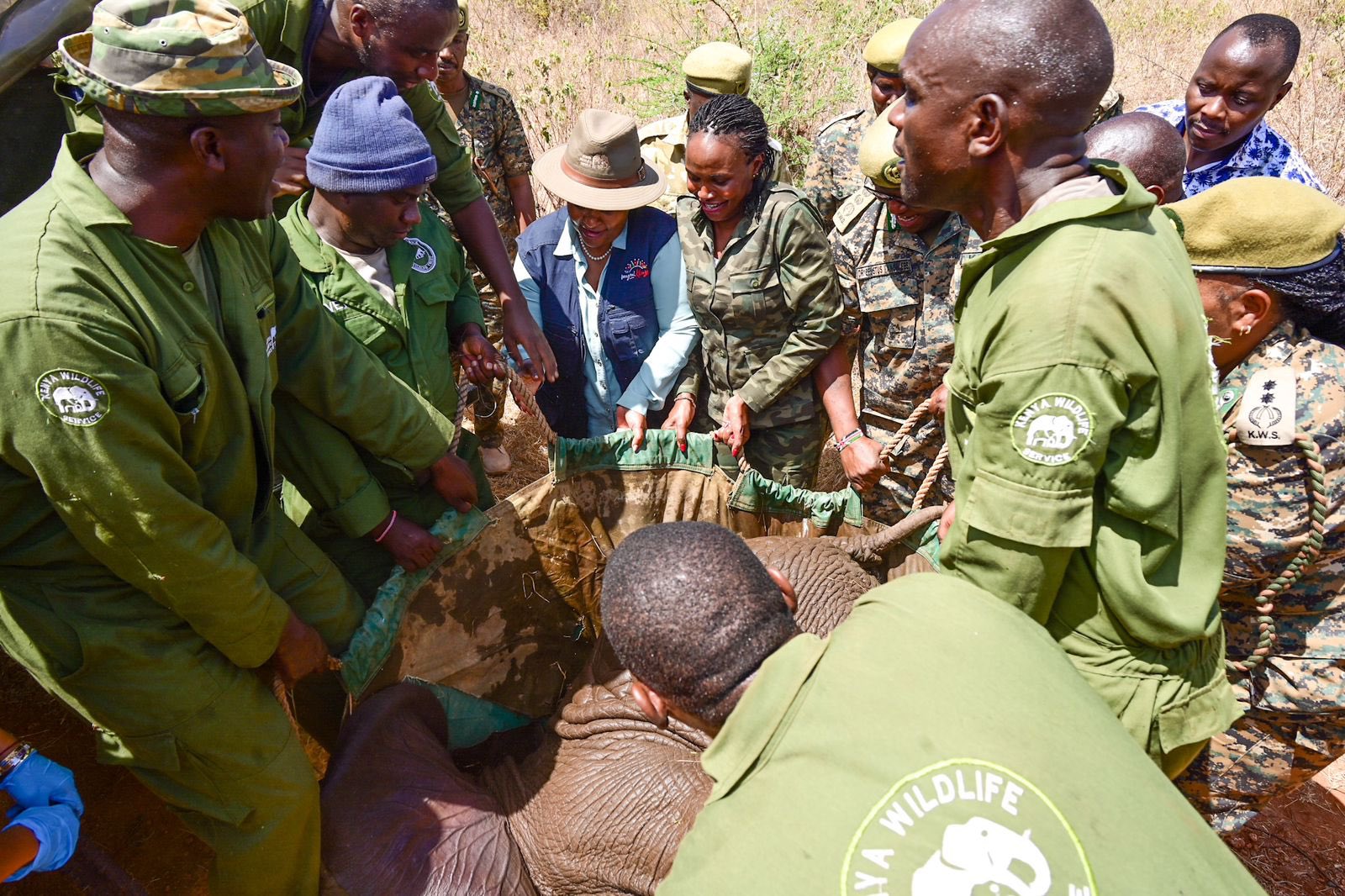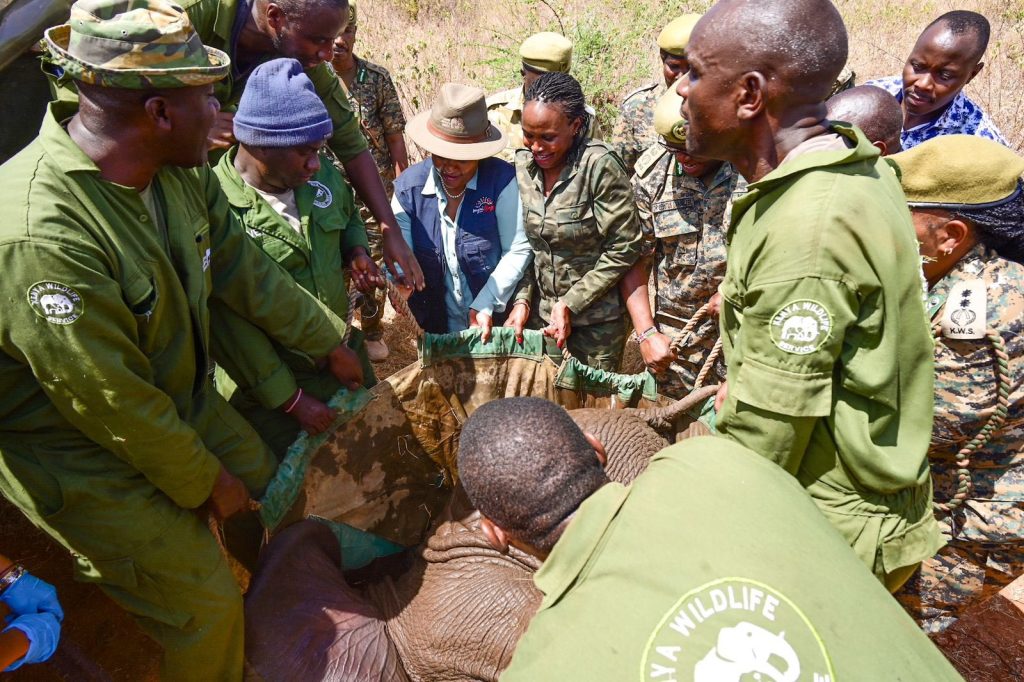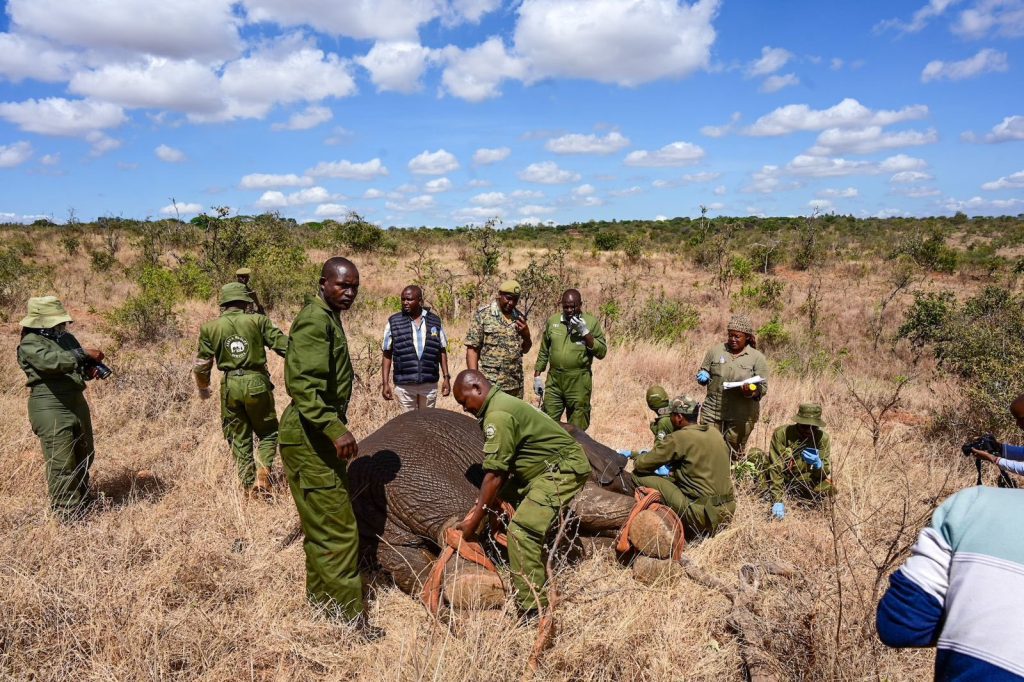Government Successfully Translocates 28 Elephants from Mwea to Aberdare National Park


October 11, 2024 – Nairobi, Kenya: The Ministry of Tourism and Wildlife has announced significant progress in the ongoing elephant translocation exercise, with 28 elephants successfully moved from Mwea National Reserve to Aberdare National Park. The update was provided by Cabinet Secretary Hon. Rebecca Miano, EGH, who emphasized that the operation, which began nearly two weeks ago, is aimed at reducing human-wildlife conflicts and ensuring the well-being of the elephants.
“Two weeks ago, I had the privilege of witnessing the first capture of elephants and presiding over the launch of this critical translocation exercise,” said Hon. Miano. “Today, I am pleased to report that we have successfully relocated 28 elephants, slightly over half of our target for this 17-day operation.”
The translocation is part of a broader strategy under the National Elephant Action Plan (2023-2032), which seeks to maintain viable elephant populations, minimize conflicts between humans and wildlife, and ensure the harmonious coexistence of both. The Cabinet Secretary noted that the exercise, costing Kshs. 12.36 million, is fully funded by the government through the Kenya Wildlife Service (KWS).
A Response to Overpopulation and Human-Wildlife Conflict
The decision to move elephants from Mwea National Reserve was driven by the reserve’s overpopulation. Originally home to 49 elephants in 1979, the population has grown to 156, exceeding the reserve’s optimal carrying capacity of 50 elephants. This has led to a herd of approximately 50 elephants venturing beyond the reserve, crossing the Tana River, and causing damage to community farms, settlements, and KenGen facilities.
Hon. Miano highlighted that relocating the elephants to Aberdare National Park would help mitigate these conflicts and improve the socio-economic well-being of communities living near the reserve. “The translocation is critical in reducing competition for food and water within the reserve and ensuring the remaining elephants have a sustainable environment,” she added.
Scientific Planning and Monitoring Measures

The Ministry assured the public that the translocation has been executed meticulously, following both the IUCN Translocation Guidelines and Kenyan protocols for the safe and effective relocation of African elephants. Prior to the operation, a scientific assessment confirmed that moving the elephants would not disrupt the ecosystem or endanger their survival.
To ensure the elephants’ safety, selected individuals from each family group have been fitted with satellite-linked GPS collars to monitor their movements for the next two years. The tracking is being conducted through the Earth Ranger system, allowing experts to observe the elephants’ behavior, movement, and interactions until they fully settle in their new environment.
A History of Conservation Success
Kenya’s elephant conservation efforts have come a long way. In the 1970s and 1980s, poaching led to a dramatic decline in the elephant population, dropping from 170,000 to just 16,000 by 1989. However, thanks to the establishment of the Kenya Wildlife Service, the tide has turned. The 2021 National Wildlife Census reported a population of 36,280 elephants, with an annual growth rate of over 5%.
“The success of our elephant conservation initiatives is evident in the growing numbers,” said Hon. Miano. “This translocation exercise is part of a long-term strategy to maintain this positive trend.”
Global Cooperation Needed for Long-Term Conservation
Despite Kenya’s successful efforts, Hon. Miano emphasized that elephant conservation requires collaboration beyond national borders. “The conservation of elephants that we undertake is not just for Kenya but a priceless heritage for the whole world,” she remarked. “I call on our local and international partners to support us in this critical effort to conserve African elephants.”
Looking Ahead
The translocation of elephants from Mwea to Aberdare National Park is set to continue until all 50 targeted elephants have been successfully moved. The fenced area of Aberdare National Park will prevent the elephants from wandering into other regions, further reducing the risk of conflict with human settlements.
“Elephant translocations may be costly and complex, but they offer significant long-term benefits,” concluded Hon. Miano. “They enhance genetic diversity, safeguard ecosystems, protect human livelihoods, and promote wildlife tourism. This is why we remain committed to such efforts and urge continuous support from stakeholders.”
As Kenya continues to balance wildlife conservation with the needs of local communities, initiatives like these highlight the country’s commitment to protecting its rich biodiversity while promoting harmonious coexistence between people and wildlife




